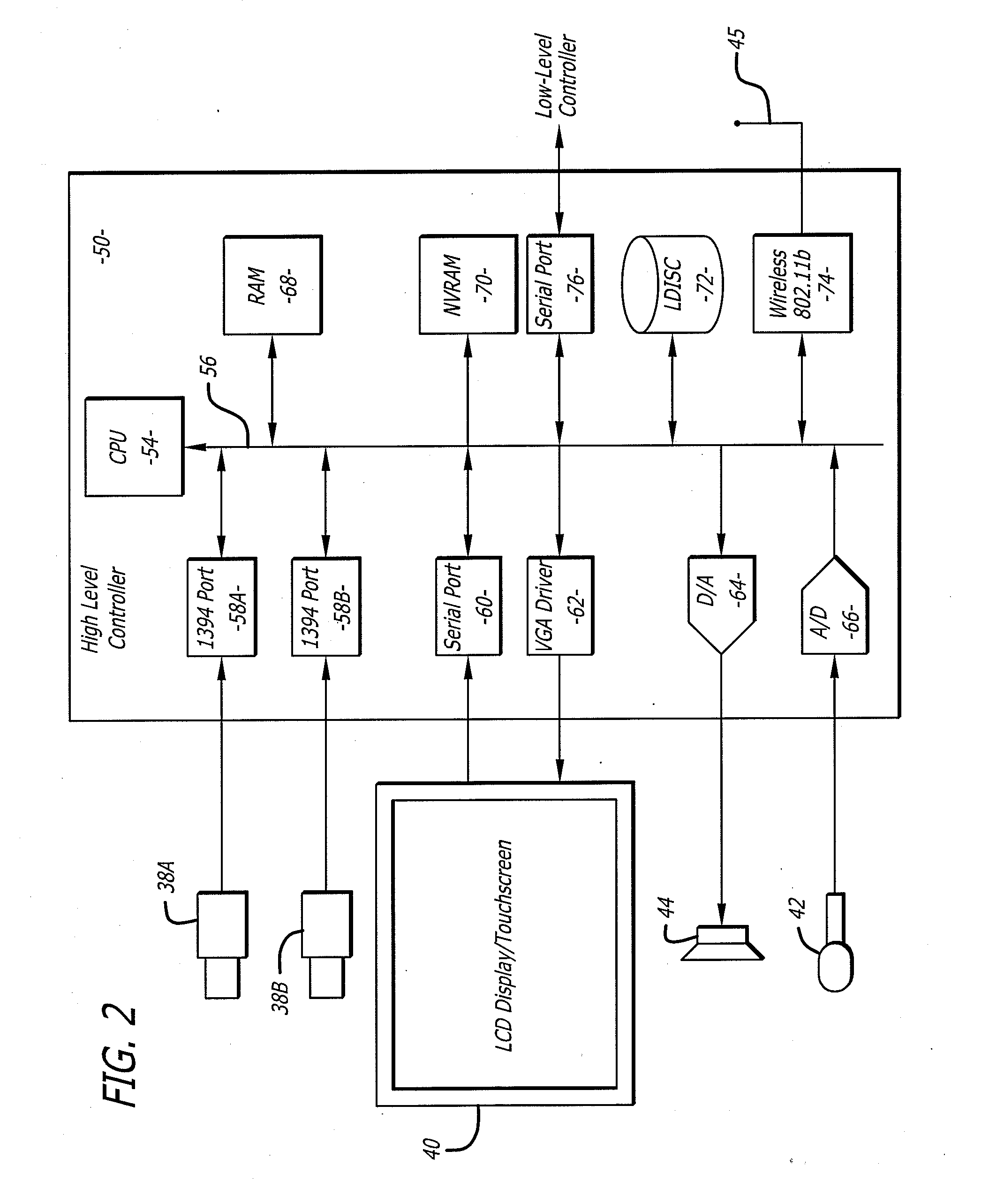Mobile videoconferencing robot system with network adaptive driving
a videoconferencing and robot system technology, applied in the field of mobile two-way teleconferencing, can solve the problems of user generated robot control commands, overcorrecting the movement of the robot, and network creating undesirable latency in the transmission
- Summary
- Abstract
- Description
- Claims
- Application Information
AI Technical Summary
Benefits of technology
Problems solved by technology
Method used
Image
Examples
Embodiment Construction
[0016]Disclosed is a remote control station that controls a robot through a network. The remote control station transmits a robot control command that includes information to move the robot. The remote control station monitors at least one network parameter and scales the robot control command as a function of the network parameter. For example, the remote control station can monitor network latency and scale the robot control command to slow down the robot with an increase in the latency of the network. Such an approach can reduce the amount of overshoot or overcorrection by a user driving the robot.
[0017]Referring to the drawings more particularly by reference numbers, FIG. 1 shows a robotic system 10 that can be used to conduct a remote visit. The robotic system 10 includes a robot 12, a base station 14 and a remote control station 16. The remote control station 16 may be coupled to the base station 14 through a network 18. By way of example, the network 18 may be either a packet...
PUM
 Login to View More
Login to View More Abstract
Description
Claims
Application Information
 Login to View More
Login to View More - R&D
- Intellectual Property
- Life Sciences
- Materials
- Tech Scout
- Unparalleled Data Quality
- Higher Quality Content
- 60% Fewer Hallucinations
Browse by: Latest US Patents, China's latest patents, Technical Efficacy Thesaurus, Application Domain, Technology Topic, Popular Technical Reports.
© 2025 PatSnap. All rights reserved.Legal|Privacy policy|Modern Slavery Act Transparency Statement|Sitemap|About US| Contact US: help@patsnap.com



